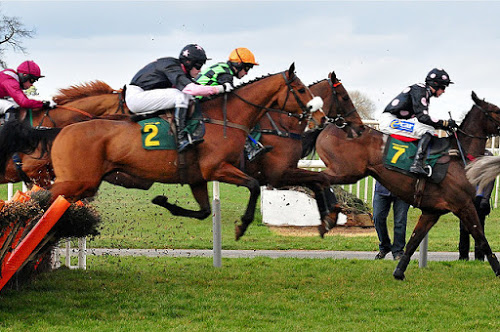Racehorses are amazing creatures: strong, fast, in incredible shape. Considering the exertion they undergo on a regular basis, keeping them in the best possible fitness and condition is vital: this means they need to be given comprehensive examinations time and again.
The most common areas of concern for racehorses are gastric and respiratory issues which will affect their ability to perform as they”re trained to. Before a horse is purchased, or judged in a contest, vets or judges will want to assess their condition. How do they do this?
Vet Scopes – Exploring the Equine Respiratory System
For a long time, upper respiratory problems in horses were assessed through physical examinations involving treadmill-based and resting endoscopy. However, today, vets can get a clearer, more in-depth idea to form a diagnosis thanks to videoendoscopy – more specifically, dynamic videoendoscopy (DVE).
Videoendoscopy has been a fairly standard procedure in people for a long time now, used as a non-invasive alternative to exploratory surgery which can be costly, time-consuming, and traumatic for the body. When doctors need to diagnose conditions or locate the source of pain or unusual activity, they can use videoscopes to assess the patient”s insides without needing to cut into the body itself.
As the health and fitness of racehorses needs to be checked on a regular basis, videoendoscopy is now a common method of checking racehorses” respiratory tract. DVE allows vets to identify and diagnose dynamic obstructions: previous endoscoping techniques had only allowed vets to assess respiratory problems while the horse was resting, using a treadmill (which doesn”t offer identical circumstances as being out on a track, with a rider), or immediately after exercise. This means certain conditions or issues would remain undetected.
Fitting an Equine Scope – Is it as Difficult as you May Think?
DVE should be preceded by a thorough exploration of the horse”s history, to help ascertain how many races it has run, how many times it may have experienced injuries, its age, its diet – all the pertinent information. The videoendoscopy should be performed with the horse”s usual rider, too, for the most accurate results.
This procedure should be given to a horse with no sedation for optimal accuracy, as some sedatives can affect the functions of the respiratory system. As the equine scope is inserted through the nostril, some horses may become agitated during the process, and knowing how a horse will react beforehand can be very difficult – so preparation is key.
To prevent the horse flinching and causing disruption to the procedure, using a neck or nose twitch is generally recommended, with sedation used only if the horse is demonstrating extreme resistance towards insertion. Using videoendoscopy during exercise offers the vet a chance to listen to the respiratory functions, and to hear any potential abnormalities.
To get the most accurate results, the rider should exercise the horse to its usual degree – any less will not allow the vet to get an accurate reading and form a proper diagnosis (if needed). Racehorses undergoing DVE should perform at their usual racing distance and speed, perhaps with another horse acting as a lead to mimic the usual situation. The rider may be fitted with a GPS device to give the vet more data to better analyze the overall performance.
A standard DVE system features:
A flexible insertion tube (with a diameter of 9.8mm), including an LED-fitted head, which eliminates the requirement for a bulky separate light
A robust permanent virtual circuit box, carrying the vital electronics
A bridle system to fix the tube, fitting over the standard tack
A lavage system with a pump, bottle, and necessary tubing
A remote receiver video display, relaying real-time footage
Looking to the Future of Equine Scopes
The technology used in DVE is certainly impressive, allowing the vet to control the scope”s position remotely, using either a keyboard or a joystick to maneuver it as needed; in some cases, the vet may transmit the footage from the tube to other professionals (even on a global level), using basic computer equipment.
However, as technology evolves, so too will the endoscoping process. ProScope Systems, a company selling refurbished endoscopes, has created the Magic View: this is an innovative portable equine scope designed to revolutionize the entire procedure.
As a horse prepared for purchase, for contest, or undergoing a check-up will likely experience the scoping procedure multiple times, this can cause them considerable discomfort, especially if the tube causes abrasions during insertion and removal. The Magic View (patent pending) is a non-invasive alternative which provides a clear view of the horse”s insides without the pain or complications.
The Magic View equine scope uses an auto iris camera and a 3.5 inch display to image the horse”s respiratory system. The Upper Airway Exercise Scope provides a wireless view, with a 11.1 millimeter insertion tube, and the Lower Airway scope has a 10.5 millimeter diameter; for deeper examinations, the system includes a three-meter gastro scope.
Without the trauma of a thick scope entering their system, the horse will receive a thorough physical check in a more comfortable manner. There is 160GB internal storage for capturing plenty of footage (up to 40 hours can be recorded), and the scope itself is easily expandable. As more and more vets begin to use the Magic View, the risks involved with scoping – causing injury and distress to the horse, especially during multiple procedures – will be eliminated, and the process will be much quicker and easier.
More information on the Magic View can be found here, and it will be interesting to see how its arrival on the market redefines the process of videoendoscoping for racehorses in years to come.

